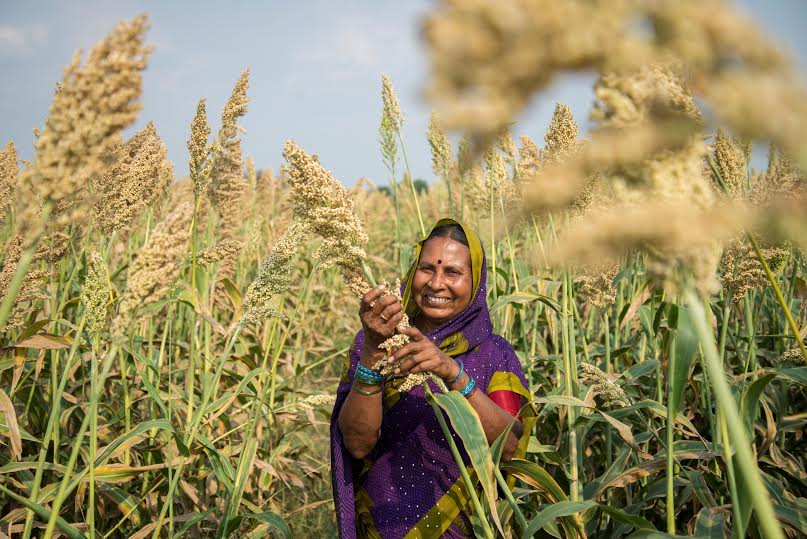
A new network of UK and Indian crop scientists aims to optimise nitrogen use by cereal farmers in India, and reduce environmental impact, by improving the communication flow from research into practical agriculture.
The Cambridge-India Network for Translational Research in Nitrogen (CINTRIN) is led by NIAB in the UK and the International Crops Research Institute for the Semi-Arid Tropics (ICRISAT) in India. It also brings together the University of Cambridge, ADAS, the Punjab Agricultural University, the National Institute of Plant Genome Research (NIPGR) and agri-IT and bio-technology specialists KisanHub and BenchBio.
NIAB’s programme leader in trait genetics Dr Alison Bentley explains that the CINTRIN partners will translate developmental biology research into innovation in nitrogen use by Indian farmers, by connecting developmental research, crop breeding, agritechnology and extension work. This will be enhanced by easily accessible data-driven methods of technology transfer, developed by existing India and UK-based companies KisanHub and BenchBio.
“Optimising biological nitrogen is pivotal to maximising crop yields and ameliorating the adverse environmental impacts of excess nitrogen application. Indian agriculture needs practical solutions to cereal crop nitrogen use which we can provide via the translation of basic research into application,” says Dr Bentley.
CINTRIN will look for new nitrogen use forms of important crops in India, for example wheat, sorghum, pearl millet, that respond differently to nitrogen application. The project will aim to breed new varieties for optimised nitrogen use, provide training in developmental research and its translation, and generate new knowledge to optimise biological nitrogen use for sustainable intensification.
“We want to promote a new understanding of the science associated with optimisation of crop nitrogen use, built on exciting discoveries in model plant species which have the potential to revolutionise the way we think about the nitrogen requirement of crops,” says Dr Bentley.
Fundamental research
CINTRIN is one of four new Virtual Joint Centres in Agricultural Nitrogen, delivered in partnership by the Biotechnology and Biological Sciences Research Council (BBSRC), the Natural Environment Research Council (NERC) and the Department of Biotechnology India (DBT) as part of the £10 million Newton-Bhabba Fund. The £2.5 million CINTRIN project, will receive just under £1.6 million from the Fund, with the remainder from sources in India.
CINTRIN builds on established research links between NIAB, the University of Cambridge and research institutes in India. Exchanges in personnel between India and the UK via CINTRIN will enhance the skills of the next generation of plant technologists and provide a standard for building capacity in fundamental plant sciences and translation into germplasm and agronomic outputs in both countries.
Professor Ottoline Leyser, Director of The Sainsbury Laboratory at the University of Cambridge says: “We are excited to be participating in CINTRIN as this sort of collaboration is essential for our research to contribute to solving the pressing problems facing agriculture.”
She is keen to emphasise that CINTRIN will foster research capacity in important areas including crop yield and grain quality. “This project helps to consolidate the Cambridge Centre for Crop Science (3CS), a new initiative between the University of Cambridge and NIAB. This collaboration with our partners in the UK and India is a major step forward in translating fundamental research into agronomic practice.”
ICRISAT principal scientist Dr Rajeev Gupta is leading the Indian component of CINTRIN. “The overarching aim of CINTRIN is to improve the income and livelihood of smallholder farmers by reducing input cost, alongside reducing the impact of excessive use of fertilisers. In addition CINTRIN will prime the long-term scientific relationship of ICRISAT, and other Indian partners, with those in the UK by exchange visits of scientists and students, scientific meetings, workshops and exchange of technologies,” says Dr Gupta.
